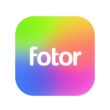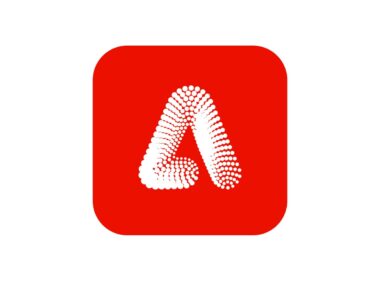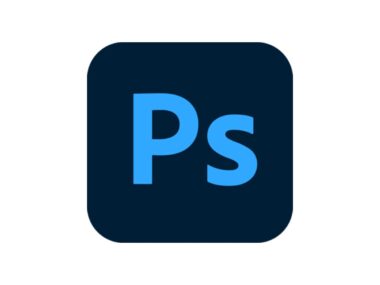Table of Contents
Key Features of Canva Design Software
Canva, a prominent design software, has recently introduced a suite of innovative features and tools, enhancing its capabilities significantly. One of the key introductions is the Assistant tool, designed to facilitate users in searching for design elements and offering quick access to features. It also provides recommendations on graphics and styles to complement existing designs.
The Magic Write feature, an AI-powered copywriting assistant, is now accessible across all Canva project types, including presentations, social media graphics, and flyers. It assists in generating website copy, presentation summaries, and even listing social media strategy ideas, adapting to the type of project for suitable copy suggestions. Moreover, Magic Write now supports 18 languages, expanding its global usability.
Canva has also innovated in presentation creation with a new feature that automatically generates presentations, including outlines and content for each slide. The Magic Design tool allows users to upload an image and choose a style to receive a selection of personalized templates. Additionally, Magic Edit enables users to add or replace elements in an image, while Magic Eraser helps in removing unwanted details.
The software now includes Beat Sync, which synchronizes video footage with a chosen soundtrack. A new Translate feature has been added too, enabling automatic translation of text in designs into over 100 languages.
Other notable features include Draw, which transforms simple sketches into polished shapes, and Layouts, which offers layout ideas and recommendations. The Styles feature suggests color palettes and fonts, and the Layers tool allows users to view all design elements in one place. Canva has also enhanced its accessibility by supporting Alt Text for images and elements and introducing 953 new fonts including popular ones like Arial and Helvetica.
Furthermore, the new Brand Hub offers tools and features to maintain brand consistency, including Magic Replace for updating brand assets across designs, and tools for creating brand templates, folders, and guidelines. It also allows admins to approve workflows directly in Canva, ensuring reviewed and approved designs before publication.
These enhancements position Canva as a versatile and user-friendly design tool, catering to a wide range of design needs and skill levels.
Performance
Canva, as a design software product, excels in its ease of use and wide range of features, making it highly suitable for day-to-day usage across various user segments.
- User Interface and Ease of Use: Canva is celebrated for its user-friendly interface. It offers an engaging onboarding process, with pop-ups and tours to guide new users, making it straightforward to navigate even for first-time users. The design process is simplified with a clean UI and a variety of templates that allow for quick and easy customization. Users can effortlessly edit templates, crop or flip images, zoom in, change positions, and add their own images, making the design process intuitive and rapid. The platform’s mobile app is particularly efficient for creating visuals for social media marketing.
- Templates and Assets: Canva boasts an extensive library with over 100 million graphic elements, images, and videos, though a significant portion of these are reserved for premium users. The platform provides over 610,000 professional templates, with a large number being premium as well. These assets offer a diverse range of options for users, ensuring a high degree of choice and flexibility in design. Smartmockups, a feature exclusive to Pro users, enables the visualization of designs on different products and screens before finalizing. The Brand Kit and Content Planner are other notable features that aid in maintaining brand consistency and planning marketing content, though they are also exclusive to Pro users.
- Versatility and Accessibility: Canva is characterized by its versatility and accessibility. The drag-and-drop editor simplifies the design process, allowing quick and easy changes. This accessibility makes Canva appealing to a broad audience, including startups and entrepreneurs who might not have the budget for professional design services. However, the free version of Canva has its limitations, such as restrictions on certain assets and the inability to export images with transparent backgrounds. Also, the inability to create unique design elements within Canva might be seen as a limitation for those seeking highly original designs. The mobile app, while functional, is not as intuitive as the web version and lacks some features.
- Target User Groups: Canva is suitable for a wide range of users, including social media managers, small business owners, teachers, marketers, and bloggers. Its vast template library and easy-to-use features make it ideal for creating visually appealing content quickly. Small business owners can create professional visuals without the need for a graphic designer, while teachers can develop engaging educational materials. Marketers and bloggers benefit from the platform’s ability to produce high-quality marketing and blog post graphics.
- Overall Assessment: Overall, Canva is a versatile tool that caters to both beginners and experienced designers. Its collaborative features are particularly beneficial for teams and remote workers, allowing for real-time collaboration on projects. Canva’s large selection of templates and design elements, combined with its user-friendly interface, significantly reduce the time and effort needed to create professional designs. This makes Canva a valuable tool for businesses of all sizes, facilitating the creation of a wide range of designs, from social media graphics to business presentations.
In summary, Canva’s performance in day-to-day usage is marked by its user-friendliness, extensive asset library, and versatility, making it an ideal choice for various users looking to create professional-quality designs with ease. However, the limitations in the free version and the mobile app, as well as the inability to create unique design elements, are aspects to consider depending on the specific needs of the user.
Pros
- Ease of Use: Canva is renowned for its user-friendly interface, including a drag-and-drop editor that makes design tasks simple and intuitive.
- Affordability: Canva offers a great value for its services, especially considering the features and resources it provides.
- No Graphic Design Experience Needed: The platform is designed to be accessible to users regardless of their graphic design skills.
- Free Plan Availability: Canva can be used for free, making it accessible to a wide range of users, including startups and entrepreneurs.
- Extensive Library: The platform offers a vast library of assets and templates, which is continually updated with new designs.
Cons
- Limited Free Plan: While the free version is useful, it does have limitations, such as restricted access to some assets and no option to export images with transparent backgrounds.
- Restriction in Creating Unique Design Elements: Canva allows customization of pre-built designs but does not enable the creation of unique design elements from scratch.
- Less Suitable for Complex Design Projects: Canva may not be the best choice for more intricate design tasks that require advanced tools and functionalities.
- Limited File Output Formats: Canva’s range of output formats is somewhat restricted, which may be a limitation for some users.
- Mobile App Usability: The mobile app version of Canva is considered less intuitive and feature-rich compared to its web version.
Conclusion
Canva, as a design software product, stands out for its innovative features and user-centric approach. The 2023 updates have particularly emphasized enhancing user experience and workflow efficiency. Here’s an expert perspective on some of these features:
- Magic Design: This feature significantly accelerates the design process, allowing users to instantly create designs for various purposes like social media posts, presentations, and videos. Users can type out their ideas, and Magic Design generates custom, on-brand designs, greatly aiding productivity and creativity.
- Magic Switch: This AI-powered tool simplifies design reformatting. With a single click, users can change the format, language, and dimensions of their designs. This feature is particularly useful for repurposing content across different formats, such as transforming documents into presentations.
- Magic Media: A built-in tool that generates AI-powered images and videos based on text prompts. This feature allows for a high level of creative freedom and efficiency in visual content creation.
- AI-Powered Translator Tool: Canva now offers an AI-powered translator that can convert designs into over 100 languages in seconds, eliminating the need for manual translations and facilitating global outreach.
- Brand Tools: These new tools centralize brand assets like templates, guidelines, fonts, and logos. This centralization streamlines workflow and ensures consistency in branding across designs.
- Data Visualization: Canva has made it easier to transform data into engaging, interactive content. This feature is essential in an era where data-driven storytelling is crucial for audience engagement.
- AI-Powered Photo Editor: The updated photo editor includes features like Magic Edit and Magic Eraser, which allow users to edit images with simple prompts and remove unwanted objects seamlessly.
- Magic Write: This feature facilitates effortless writing and editing, even allowing users to incorporate their brand voice, making it useful for creating consistent and branded content across various formats.
- Canva for Education: Canva has significantly enhanced its offerings for the educational sector with tools that enable educators to plan, build, structure, and teach lessons comprehensively within Canva.
- Draw: A highly requested feature that allows users to engage in freehand drawing, transforming simple sketches into polished shapes. This feature enhances the creative flexibility within Canva.
These features demonstrate Canva’s commitment to simplifying the design process while providing powerful tools for users, irrespective of their design expertise. The focus on AI integration, user-friendly interfaces, and the ability to cater to a wide array of design needs makes Canva a robust tool for both individual and collaborative design work.
FAQs
-
What is Canva and who can use it?
Canva is a user-friendly graphic design tool suitable for professionals and beginners alike, offering a range of templates for various design needs.
-
Does Canva offer features for team collaboration?
Yes, Canva provides collaborative features that allow team members to work on projects together in real-time, making it ideal for team projects and remote work.
-
Are there any advanced features in Canva for professional designers?
Canva includes advanced features like Magic Design, Brand Tools, and AI-powered photo editing, catering to professional design requirements.
-
Is Canva available for free, and what are the limitations?
Canva offers a free version with access to numerous templates and design elements, but premium features are restricted and available under paid plans.
-
Can Canva be used for educational purposes?
Yes, Canva is well-suited for educational use, offering a dedicated Canva for Education platform with tools for lesson planning, teaching materials, and classroom management.









